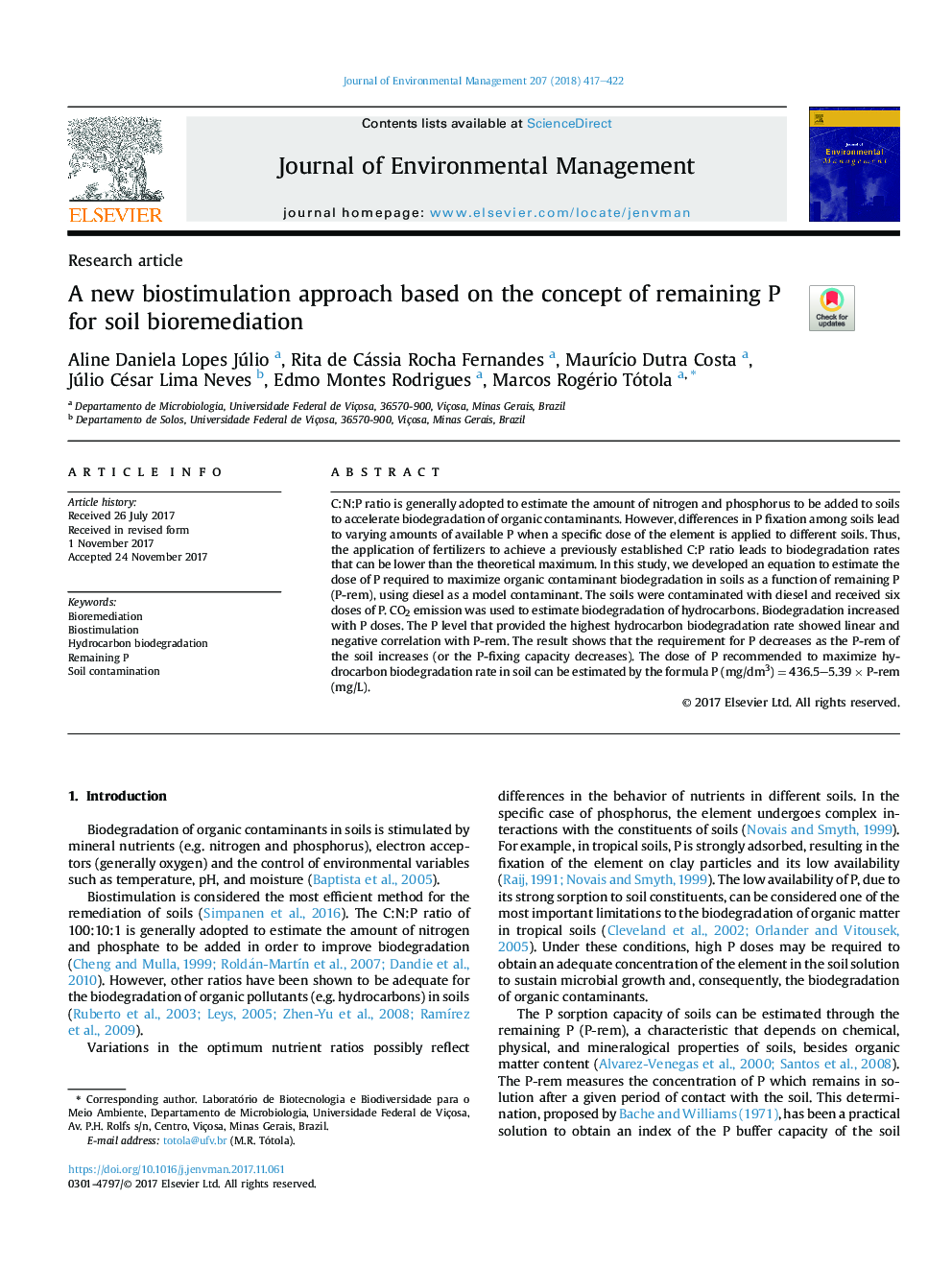| Article ID | Journal | Published Year | Pages | File Type |
|---|---|---|---|---|
| 7478620 | Journal of Environmental Management | 2018 | 6 Pages |
Abstract
C:N:P ratio is generally adopted to estimate the amount of nitrogen and phosphorus to be added to soils to accelerate biodegradation of organic contaminants. However, differences in P fixation among soils lead to varying amounts of available P when a specific dose of the element is applied to different soils. Thus, the application of fertilizers to achieve a previously established C:P ratio leads to biodegradation rates that can be lower than the theoretical maximum. In this study, we developed an equation to estimate the dose of P required to maximize organic contaminant biodegradation in soils as a function of remaining P (P-rem), using diesel as a model contaminant. The soils were contaminated with diesel and received six doses of P. CO2 emission was used to estimate biodegradation of hydrocarbons. Biodegradation increased with P doses. The P level that provided the highest hydrocarbon biodegradation rate showed linear and negative correlation with P-rem. The result shows that the requirement for P decreases as the P-rem of the soil increases (or the P-fixing capacity decreases). The dose of P recommended to maximize hydrocarbon biodegradation rate in soil can be estimated by the formula P (mg/dm3)Â =Â 436.5-5.39Â ÃÂ P-rem (mg/L).
Related Topics
Physical Sciences and Engineering
Energy
Renewable Energy, Sustainability and the Environment
Authors
Aline Daniela Lopes Júlio, Rita de Cássia Rocha Fernandes, MaurÃcio Dutra Costa, Júlio César Lima Neves, Edmo Montes Rodrigues, Marcos Rogério Tótola,
